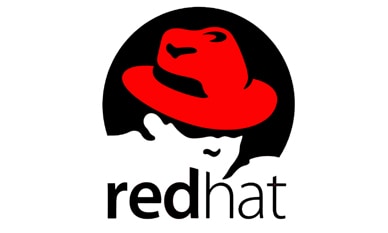
Control services and daemons
Review how to manage services and the boot-up process using systemctl.
Manage IPv6 networking
Configure and troubleshoot basic IPv6 networking on Red Hat Enterprise Linux systems.
Configure link aggregation and bridging
Configure and troubleshoot advanced network interface functionality including bonding, teaming, and local software bridges.
Control network port security
Permit and reject access to network services using advanced SELinux and firewalld filtering techniques.
Manage DNS for servers
Set and verify correct DNS records for systems and configure secure DNS caching.
Configure email delivery
Relay all email sent by the system to an SMTP gateway for central delivery.
Provide block-based storage
Provide and use networked iSCSI block devices as remote disks.
Provide file-based storage
Provide NFS exports and SMB file shares to specific systems and users.
Configure MariaDB databases
Provide a MariaDB SQL database for use by programs and database administrators.
Provide Apache HTTPD web service
Configure Apache HTTPD to provide Transport Layer Security (TLS)-enabled websites and virtual hosts.
Write bash scripts
Write simple shell scripts using bash.
Bash conditionals and control structures
Use bash conditionals and other control structures to write more sophisticated shell commands and scripts.
Configure the shell environment
Customize bash startup and use environment variables, bash aliases, and bash functions.
Comprehensive review
Practice and demonstrate knowledge and skills learned in this course.
This course is intended for experienced Linux administrators wishing to learn enterprise-level automation techniques through scripting, how to deploy and secure network services, and how to manage other key security features of Red Hat Enterprise Linux. Prior to taking this course, you should have earned your RHCSA or possess equivalent skills.
- RHCSA certification or equivalent experience
- For candidates who have not earned their RHCSA certification, confirmation of the correct skills and knowledge can be obtained by passing the online skills assessment
Impact on the organization
This course is intended to develop the skills needed to improve infrastructure performance, increase system utilization and security, and boost responsiveness to system failures by introducing advanced administration tasks and techniques. The result should be improved infrastructure security, lower costs of infrastructure services, more robust IT infrastructure, faster deployment of open source technologies, and improved quality of infrastructure services and products.
Red Hat has created this course in a way intended to benefit our customers, but each company and infrastructure is unique, and actual results or benefits may vary.
Impact on the individual
As a result of attending this course, you should be able to perform the key tasks needed as a full-time Linux system engineer or consultant. This course introduces enterprise Linux advanced administration topics, including service and daemon control, network configuration and troubleshooting, NFS and SAMBA file server configuration, Apache HTTP web server management, MariaDB SQL database configuration, Postfix SMTP configuration, DNS troubleshooting, and bash scripting.
You should be able to demonstrate these skills:
- Control services and daemons.
- Manage networking.
- Configure link aggregation, bridging, teaming, and bonding.
- Configure filters with firewalls.
- Permit and reject access to network services using SELinux.
- Manage DNS servers.
- Configure SMTP email delivery.
- Provide iSCSI block storage.
- Configure NFS and SAMBA file-based storage.
- Configure MariaDB SQL database.
- AConfigure Apache HTTPD with TLS-enabled virtual hosts.
- Write simple bash automation scripts.
